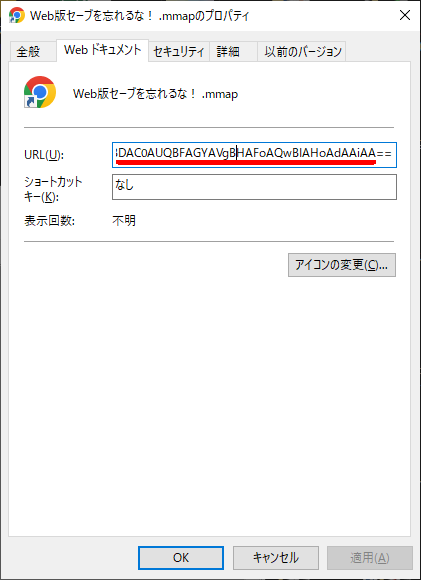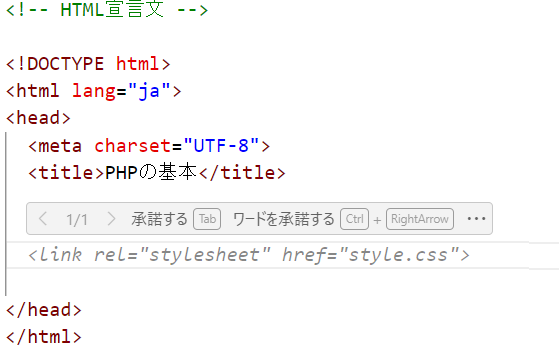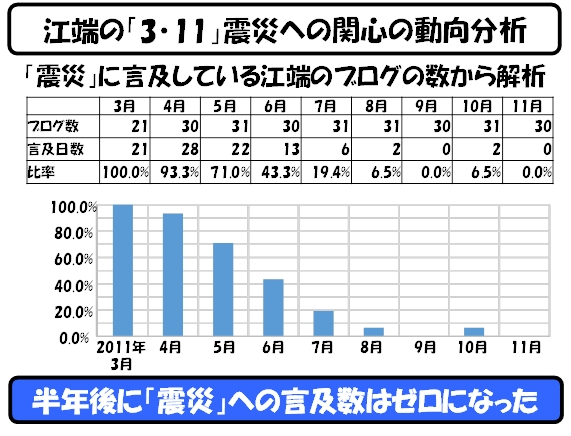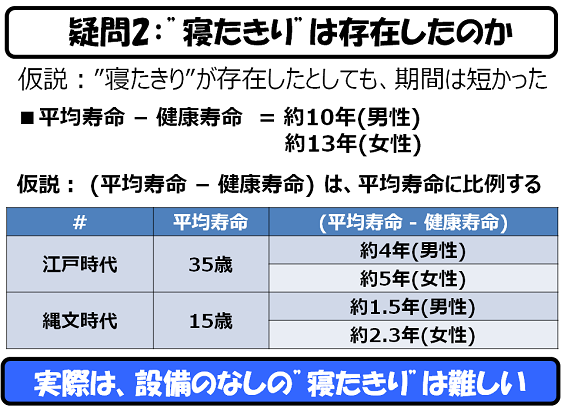// NormalizeCoordinates 京急富岡駅を基準として正規化された緯度と経度を返す関数
// C:\Users\ebata\tomioka_school\src\trip_school\NormalizeCoordinates.go
package main
import (
"fmt"
"math"
)
func NormalizeCoordinates(referenceLat, referenceLng, lat, lng float64) (float64, float64) {
// 1度あたりの緯度経度のメートル換算
metersPerDegreeLat := 111319.9 // 緯度1度あたりのメートル数
metersPerDegreeLng := 111319.9 * math.Cos(referenceLat*(math.Pi/180.0)) // 経度1度あたりのメートル数
// 緯度と経度の差を計算
deltaLat := lat - referenceLat
deltaLng := lng - referenceLng
// 正規化された緯度と経度を計算
normalizedLat := deltaLat * metersPerDegreeLat / 100.0
normalizedLng := deltaLng * metersPerDegreeLng / 100.0
return normalizedLat, normalizedLng
}
func main() {
// 京急富岡駅の緯度経度
keikyuTomiokaLat := 35.367131726654705
keikyuTomiokaLng := 139.62988318023088
// 確認用の緯度経度(富岡駅のバス停)
lat := 35.36605614545459
lng := 139.6295094178281
// 緯度経度の正規化
normalizedLat, normalizedLng := NormalizeCoordinates(keikyuTomiokaLat, keikyuTomiokaLng, lat, lng)
fmt.Printf("正規化された緯度: %.6f\n", normalizedLat)
fmt.Printf("正規化された経度: %.6f\n", normalizedLng)
}京急富岡駅を基準として正規化された緯度と経度を返す関数
2つの日時文字列の時間差を秒単位で計算し、600秒を1として正規化する関数
// NormalizeTime 2つの日時文字列の時間差を秒単位で計算し、600秒を1として正規化する関数
// C:\Users\ebata\tomioka_school\src\trip_school\NormalizeTime.go
package main
import (
"fmt"
"time"
)
func NormalizeTime(timeStr1, timeStr2 string) float64 {
layout := "2006-01-02 15:04:05"
t1, err := time.Parse(layout, timeStr1)
if err != nil {
fmt.Println("Error parsing time string 1:", err)
return 0
}
t2, err := time.Parse(layout, timeStr2)
if err != nil {
fmt.Println("Error parsing time string 2:", err)
return 0
}
duration := t2.Sub(t1).Seconds()
normalizedDuration := duration / 600.0
return normalizedDuration
}
func main() {
timeStr1 := "2024-01-01 00:00:00"
timeStr2 := "2024-02-11 23:45:00"
normalized := NormalizeTime(timeStr1, timeStr2)
fmt.Println("正規化された時間差:", normalized)
}
3次元を取り扱うDBSCANプログラム
/*
c:\users\ebata\dscan\dscan3.go
DBSCANアルゴリズムを実装し、3次元空間のデータ(x、y、t)をクラスタリングするシンプルなプログラムです。
このプログラムでは、各データポイントは3次元座標(x、y、t)で表され、距離の計算にはユークリッド距離を使用します。
DBSCANをk-meansの違いで説明します。
DBSCAN(Density-Based Spatial Clustering of Applications with Noise)とk-meansは、クラスタリングアルゴリズムですが、そのアプローチや動作原理にはいくつかの違いがあります。
(1)クラスタリング方法:
- DBSCAN: 密度ベースのクラスタリングアルゴリズムであり、データポイントの密度に基づいてクラスタを形成します。各点は、一定の距離(ε、epsilon)内に最小限の近傍点数(minPts)が存在する場合、その点を中心としたクラスタが形成されます。
- k-means: 距離ベースのクラスタリングアルゴリズムであり、データポイントの距離に基づいてクラスタを形成します。クラスタの数(k)を事前に指定し、各点を最も近いセントロイド(クラスタの中心)に割り当てます。
(2)クラスタの形状:
- DBSCAN: クラスタの形状は任意であり、密度の高い領域に基づいて形成されます。したがって、DBSCANは非凸形状のクラスタを処理できます。
- k-means: クラスタの形状は円形(球形)であり、各クラスタのセントロイドからの距離に基づいて決定されます。したがって、k-meansは凸形状のクラスタを前提としています。
(3)ハイパーパラメータ:
- DBSCAN: ε(epsilon)とminPtsの2つのハイパーパラメータを必要とします。εは近傍点の距離の閾値を定義し、minPtsはクラスタと見なすための最小の近傍点数を指定します
- k-means: クラスタの数(k)を指定する必要があります。
(4)ノイズの処理:
- DBSCAN: ノイズポイントを自動的に検出し、外れ値として扱います。密度が低い領域に存在するポイントは、任意のクラスタに割り当てられず、ノイズとして扱われます。
-k-means: 外れ値やノイズの処理を明示的に行いません。各点は必ずどれかのクラスタに割り当てられます。
要するに、DBSCANは密度ベースのアルゴリズムであり、任意の形状のクラスタを検出し、ノイズを処理する能力があります。一方、k-meansは距離ベースのアルゴリズムであり、クラスタの形状が円形であることを前提としています。
*/
package main
import (
"fmt"
"math"
)
// Point represents a 3D point with coordinates x, y, and t
type Point struct {
X, Y, T float64
}
// DistanceTo calculates the Euclidean distance between two 3D points
func (p Point) DistanceTo(other Point) float64 {
dx := p.X - other.X
dy := p.Y - other.Y
dt := p.T - other.T
return math.Sqrt(dx*dx + dy*dy + dt*dt)
}
// Cluster represents a cluster of points
type Cluster struct {
Points []Point
}
// DBSCAN performs density-based clustering of 3D points
func DBSCAN(points []Point, epsilon float64, minPts int) []Cluster {
var clusters []Cluster
var visited = make(map[Point]bool)
for _, point := range points {
if visited[point] {
continue
}
visited[point] = true
neighbours := getNeighbours(points, point, epsilon)
if len(neighbours) < minPts {
continue
}
var clusterPoints []Point
expandCluster(&clusterPoints, points, visited, point, neighbours, epsilon, minPts)
clusters = append(clusters, Cluster{Points: clusterPoints})
}
return clusters
}
// getNeighbours returns all points within distance epsilon of the given point
func getNeighbours(points []Point, point Point, epsilon float64) []Point {
var neighbours []Point
for _, other := range points {
if point.DistanceTo(other) <= epsilon {
neighbours = append(neighbours, other)
}
}
return neighbours
}
// expandCluster expands the cluster from the given point
func expandCluster(cluster *[]Point, points []Point, visited map[Point]bool, point Point, neighbours []Point, epsilon float64, minPts int) {
*cluster = append(*cluster, point)
for _, neighbour := range neighbours {
if !visited[neighbour] {
visited[neighbour] = true
neighbourNeighbours := getNeighbours(points, neighbour, epsilon)
if len(neighbourNeighbours) >= minPts {
expandCluster(cluster, points, visited, neighbour, neighbourNeighbours, epsilon, minPts)
}
}
// Add neighbour to cluster if not already in another cluster
var isInCluster bool
for _, c := range *cluster {
if c == neighbour {
isInCluster = true
break
}
}
if !isInCluster {
*cluster = append(*cluster, neighbour)
}
}
}
func main() {
// Example usage
points := []Point{
{X: 1, Y: 2, T: 0},
{X: 1.5, Y: 1.8, T: 1},
{X: 5, Y: 8, T: 2},
{X: 8, Y: 8, T: 3},
{X: 1, Y: 0.6, T: 4},
{X: 9, Y: 11, T: 5},
{X: 8, Y: 2, T: 6},
{X: 10, Y: 2, T: 7},
{X: 9, Y: 3, T: 8},
}
epsilon := 3.0
minPts := 2
clusters := DBSCAN(points, epsilon, minPts)
for i, cluster := range clusters {
fmt.Printf("Cluster %d:\n", i+1)
for _, point := range cluster.Points {
fmt.Printf(" (%.2f, %.2f, %.2f)\n", point.X, point.Y, point.T)
}
}
}
Web版 MindManagerが「ファイルを開けませんでした」と言ってきた時の対応

を起動したら、

となることがあるので、この対応方法をメモしておきます。
https://app.mindmanager.com/ と入力(#my-filesはつけない)

ファイルが表示されるので、これを選択。

表示されるようになる。

のプロパティを開いて新しいURLをコピペする。

以上
Webサーバに繋っているブラウザが、全部いなくなったと確認できた場合(30秒後)に、url = "http://localhost:8000/cancelAllVideoStreamGround"へメッセージを渡すプログラム
本プログラムは、
を拡張したものです。index.htmlは、このページに記載されているものを、そのまま、使って下さい。
こちらのプログラムでは、Webサーバに繋っているブラウザが、全部いなくなったと確認できた場合(30秒後)に、url = "http://localhost:8000/cancelAllVideoStreamGround"へメッセージを渡すプログラムです。
デバッグの為に使っていたコメントが残っていますので、適当に削除して下さい。
# c:\users\ebata\webMonitor.py
# https://wp.kobore.net/%e6%b1%9f%e7%ab%af%e3%81%95%e3%82%93%e3%81%ae%e6%8a%80%e8%a1%93%e3%83%a1%e3%83%a2/post-12475/を参照のこと
import threading
import time
import requests
import sys
from flask import Flask, request, jsonify
from requests.exceptions import Timeout
from flask_cors import CORS
app = Flask(__name__)
CORS(app) # すべてのリクエストに対してCORSを有効にする
last_heartbeat_time = 0
lock = threading.Lock()
def send_notification():
url = "http://localhost:8000/cancelAllVideoStreamGround"
try:
response = requests.post(url, timeout=3)
response.raise_for_status()
print("Notification sent successfully.")
sys.stdout.flush() # 標準出力をフラッシュする
except Timeout:
print("Error: Timeout while sending notification")
except requests.exceptions.RequestException as e:
print(f"Error sending notification: {e}")
def check_heartbeat():
global last_heartbeat_time
while True:
current_time = time.time()
print("ct:",current_time)
print("lht:",last_heartbeat_time)
diff = current_time - last_heartbeat_time
print("diff:",diff)
with lock:
if current_time - last_heartbeat_time > 30:
send_notification()
last_heartbeat_time = current_time
time.sleep(1)
@app.route('/heartbeat', methods=['POST'])
def receive_heartbeat():
print("pass receive_heartbeat()")
global last_heartbeat_time
data = request.get_json()
print(f"Received heartbeat: {data}")
sys.stdout.flush() # 標準出力をフラッシュする
with lock:
last_heartbeat_time = time.time()
print("lht_2:",last_heartbeat_time)
# data = request.get_json()
# print(f"Received heartbeat: {data}")
# sys.stdout.flush() # 標準出力をフラッシュする
return jsonify({"status": "OK"})
if __name__ == "__main__":
heartbeat_thread = threading.Thread(target=check_heartbeat)
heartbeat_thread.start()
app.run(host='0.0.0.0', port=3000)私用のコメント
(1)receive_heartbeat():と receive_heartbeat()を同時に走らせる為に、スレッド化しなければならなくなった → で Ctrl-Cで止められなくなったので、ちょっと困っている(が、シェル画面ごと落せばいいので、現在はそうしている)
(2)url = "http://localhost:8000/cancelAllVideoStreamGround" からの時間がもたつく場合には、Timeoutを設定すると良いかもしれない。send_notification()を丸ごと差し替えると、こんな感じ。
def send_notification():
url = "http://localhost:8000/cancelAllVideoStreamGround"
try:
response = requests.post(url, timeout=3)
response.raise_for_status()
print("Notification sent successfully.")
sys.stdout.flush() # 標準出力をフラッシュする
except Timeout:
print("Error: Timeout while sending notification")
except requests.exceptions.RequestException as e:
print(f"Error sending notification: {e}")(3)Webブラウザは、バックエンドに置いておくと、Heatbeatを出力しないことがあるので、常にアクティブにしておく必要があります(バックエンドのままにしておくと、cancelAllVideoStreamGroundが動き出します)
以上
GitHub Copilotをvscodeにアドインしたが、tabキーを押しても提案を採用できない
「まだChatGPTを使ってない人は『人生を悔い改めた方がいい』」 ―― と言った、ソフトバンクの孫社長に申し上げます。『いらんこと言うな』と。
にも書いていますが、
『当初、私は、ChatGPT(対話型AIアシスタント))、Grammerly(英語文章構成サービス), Deepl(翻訳サービス)を、無料で使ってきたのですが、私のそのサービスの利用頻度は、無料の範囲を越えてしまい、全て有料の会員となっています』
で、ここにAmazon Lightsailがあって、さらに、さくらインターネットのサービス(kobore.net)が入って、当然、ドメイン名の使用料も含まれていて、もう、これは、IT/AI搾取と称呼してもしても良いのではないかと思います。
で、先程、GitHub Copilot(10ドル/月)にも入りました ―― 貢いでいる対象を考えると「ホスト/ホステスに貢いだ方が楽しそう」です。金額の規模感は違いますが。
ジュニアに質問しにくいシニアにとっては、十分ペイする「お助けサービス」ではあるのですが ―― 私の人生、ハレがない とは思います。
それはさておき
先程まで、GitHub Copilotをvscodeにアドインしたが、tabキーを押しても提案を採用できないという問題に悩まされていました。
参考にさせて頂いたのは、こちら(https://mindtech.jp/?p=2330)のページです。

上記の"承諾する Tab"の部分をマウスでクリックすれば、確定はできるのですが、そんなコーディング作業、かったるくてやっていられません。
私の方も、やはり、Awesome Emacs Keymap と、vscode-emacs-indent が悪さをしていたようです。
これらを無効にした後、vscodeを再立ち上げしたら、コード確定ができるようにはなりましたが、当然ですが、emacsのキーバインドが使えなくなりました。しかし、私にはEmacsの環境が使えないコーディング環境は耐えられそうにありません(体が矯正不能)。
で、ちょっと試しに、Awesome Emacs Keymap を無効して、vscodeを再立ち上げして、GitHub Copilotを起動している状態で、Awesome Emacs Keymap を再び有効にしてみたら、両立に成功しているようです(すぐにボロが出るかもしれませんが)。
とりあえず、メモとして残しおきます。
またコケたら、こちらのメモに追記します。
fastapiの起動時にコマンドを起動して、そのままほったらかしにするコード
ChatGPTと相談しながら、fastapiの起動時にコマンドを起動する方法を試していたのですが、上手く動かない(最初のコマンドでロックしてしまう)ので、起動したまま、そのまま放置するコード(プロセスを落したければ、コマンドから自力でkillコマンドで落す必要ある)にしました。
import subprocess
from fastapi import FastAPI
app = FastAPI()
# 各コマンドを実行する関数
def run_command(command):
try:
# バックグラウンドでプロセスを実行
subprocess.Popen(command, shell=True, stdout=subprocess.PIPE, stderr=subprocess.PIPE, close_fds=True)
except Exception as e:
print(f"コマンド '{command}' の実行中にエラーが発生しました: {str(e)}")
# 各コマンドを実行
commands = [
"sudo socat udp-listen:38089,reuseaddr,fork udp:192.168.3.153:38089",
"sudo socat udp-listen:38090,reuseaddr,fork udp:192.168.3.153:38090",
"sudo socat udp-listen:38091,reuseaddr,fork udp:192.168.3.153:38091"
]
for command in commands:
run_command(command)
@app.on_event("startup")
async def startup_event():
print("Application startup complete.")
if __name__ == "__main__":
import uvicorn
uvicorn.run(app, host="0.0.0.0", port=8000)
fastapiのmain.pyを起動すると自動的に10秒おきに"hello"を自動的に表示するコードを作って下さい。
import asyncio
from fastapi import FastAPI
app = FastAPI()
async def hello_timer():
while True:
print("hello")
await asyncio.sleep(10) # 10秒待機
@app.on_event("startup")
async def startup_event():
# FastAPIアプリケーションの起動時にタイマーを開始
asyncio.create_task(hello_timer())
@app.get("/")
async def get_hello():
return {"message": "hello"}
座標を入力して一番近いpostGISのノードIDを検知して、ダイクストラ計算を行い、ユーザ心理を計算するファジィ推論を行うサンプルプログラム
/*
C:\Users\ebata\yamaguchi\src_light
■このサンプルプログラムのキモ
(1)座標を入力して一番近いpostGISのノードIDを検知して、ダイクストラ計算を行うこと
(2)ユーザ心理を計算するファジィ推論を行うこと
が入っているプログラムである。
■自動計算を実施するバッチ、dummy.batの内容は以下の通り
go run light-sim.go data/mod_20220522holyday_visitor.csv data/new_20220522holyday_visitor.csv
go run light-sim.go data/mod_20220521holyday_visitor.csv data/new_20220521holyday_visitor.csv
go run light-sim.go data/mod_20220522holyday.csv data/new_20220522holyday.csv
go run light-sim.go data/mod_20220518weekday.csv data/new_20220518weekday.csv
■その入力用のcsvファイルの一つである、"data/mod_20220522holyday_visitor.csv"の内容は以下の通り
34.172891,131.456346,34.182418,131.474987,21
34.163801,131.444142,34.164454,131.449142,62
34.158856,131.435881,34.164727,131.431189,52
(中略)
34.146351,131.461154,34.167045,131.448468,20
34.145639,131.449237,34.149603,131.432828,29
■"data/bike_stations.csv"の中身
index,station,address,lat,lon,initial_stock,max_stock
1,null,null,34.102543,131.392639,20,20
2,null,null,34.102543,131.392639,20,20
3,null,null,34.102543,131.392639,20,20
4,山口県庁前バス停,山口市春日町2086-4,34.183621,131.471688,20,20
5,null,null,34.102543,131.392639,20,20
6,山口市役所 駐輪場,山口市亀山町2-1,34.178056,131.474204,20,20
7,一の坂川交通交流広場,山口市中河原7-1,34.17960577,131.4783006,20,20
8,null,null,34.102543,131.392639,20,20
9,コープやまぐちこことどうもん店 駐輪場,山口市道場門前1-1-18,34.174234,131.474885,20,20
10,山口駅 駐輪場,山口市惣太夫町288-9,34.172219,131.480013,20,20
11,山口市教育委員会 駐輪場,山口市中央5-14-22,34.170346,131.46915,20,20
12,null,null,34.102543,131.392639,20,20
13,ファミリーマート山口泉都町店,山口市泉都町9-2,34.167346,131.462048,20,20
14,防長苑,山口市熊野町4-29,34.167204,131.45973,20,20
15,null,null,34.102543,131.392639,20,20
16,ホテルニュータナカ,山口市湯田温泉2-6-24,34.163937,131.456115,20,20
17,null,null,34.102543,131.392639,20,20
18,湯田温泉駅 駐輪場,山口市今井町146-6,34.159954,131.459967,20,20
19,アルク平川店,山口市平井724-1,34.152742,131.464199,20,20
20,山口大学(正門),山口市吉田1677-1,34.149852,131.466214,20,20
21,小郡総合支所 駐輪場,山口市小郡下郷609番地1,34.102543,131.392639,20,20
22,KDDI維新ホール 駐輪場,山口市小郡令和1丁目1番地,34.09368,131.394,20,20
23,風の並木通り(新山口駅南口側),山口市小郡金町1-1付近,34.092322,131.397667,20,20
24,平成公園 駐車場内,山口市小郡平成町3-1,34.088168,131.401698,20,20
25,null,null,34.102543,131.392639,20,20
26,アルク小郡店,山口市小郡下郷2273番地1,34.097135,131.391295,20,20
27,null,null,34.102543,131.392639,20,20
*/
package main
import (
"database/sql"
"encoding/csv"
"fmt"
"log"
"os"
"strconv"
_ "github.com/lib/pq"
)
// 自転車の型
type BikeParam struct {
id int // 自転車の識別番号
destinationId int // 出発座標番号(*1)
arrivalId int // 到着座標番号
// (*1)
// 名前がdestination(目的地)となっているのは、バスがユーザを迎えに行き、載せた時点が「出発」扱いであった名残。
// 自転車の場合は迎えに行く動作が無いので、名称変更が望ましい。
}
// 座標情報
type LocInfo struct {
Lng float64 // 経度
Lat float64 // 緯度
Source int // 地図DBのID
}
// 自転車の拠点
type BikeStation struct {
location LocInfo // 拠点の位置
initialStock int // 最初に配置する自転車の台数
stationName string // 拠点の名称
}
// ステーションからの自転車の出入り
type StationStock struct {
outgoing int
incoming int
}
var stationstock [40]StationStock
const STATIONS_PATH string = "data/bike_stations.csv"
// 拠点情報を読み込み、BikeStation型の配列を返す
func getStationInfo(dbMap *sql.DB) []BikeStation {
// ファイルをオープン
csvFile, err := os.Open(STATIONS_PATH)
if err != nil {
log.Fatal(err)
}
defer csvFile.Close()
// CSVファイルの中身を読み込み
r := csv.NewReader(csvFile)
rows, err := r.ReadAll()
if err != nil {
log.Fatal(err)
}
stationInfo := []BikeStation{} // 出力変数
// 行ごとに
for i, row := range rows {
if i == 0 {
continue // CSVのヘッダー行を無視
}
lat, err := strconv.ParseFloat(row[3], 64)
if err != nil {
log.Fatal(err)
}
lng, err := strconv.ParseFloat(row[4], 64)
if err != nil {
log.Fatal(err)
}
initialStockVal, err := strconv.Atoi(row[5])
if err != nil {
log.Fatal(err)
}
stationNameVal := row[1]
// CSV読み込み時点の座標のログ(地図DBによって補正する前の座標)
//log.Println("csv read result:", lng, lat, initialStock)
// 地図DBを参照することによって、ステーションの位置をノードの位置にする
source, lngModified, latModified := fixPosition(dbMap, lng, lat)
loc := LocInfo{
Lng: lngModified,
Lat: latModified,
Source: source,
}
// 読み込めていることの確認ログ
//log.Println("Station", (i - 1), lngModified, latModified, initialStock, source)
bikeStation := BikeStation{
location: loc,
initialStock: initialStockVal,
stationName: stationNameVal,
}
stationInfo = append(stationInfo, bikeStation)
}
return stationInfo
}
// Scan用の仮変数
var source int
var longitude float64
var latitude float64
var dist float64
// 指定した座標に近いDB上の座標を取得
func fixPosition(db *sql.DB, _x1, _y1 float64) (int, float64, float64) {
upperLimitMeter := 1500.0 // 近傍ノードの上限を1500 mに設定
str := fmt.Sprintf(
// 修正前: ways (道) の中から最近傍を取得
// "SELECT source, x1 AS longitude, y1 AS latitude, ST_Distance('SRID=4326;POINT(%v %v)'::GEOGRAPHY, the_geom) AS dist FROM ways WHERE ST_DWithin(the_geom, ST_GeographyFromText('SRID=4326;POINT(%v %v)'), %.1f) ORDER BY dist LIMIT 1",
// 修正後: ways_vertices_pgr (点座標) の中から最近傍を取得
"SELECT id AS source, lon AS longitude, lat AS latitude, ST_Distance('SRID=4326;POINT(%v %v)'::GEOGRAPHY, the_geom) AS dist FROM ways_vertices_pgr WHERE ST_DWithin(the_geom, ST_GeographyFromText('SRID=4326;POINT(%v %v)'), %.1f) ORDER BY dist LIMIT 1",
_x1, _y1, _x1, _y1, upperLimitMeter,
)
//fmt.Println(str)
rows, err := db.Query(str)
if err != nil {
log.Fatal(err)
}
defer rows.Close()
foundGoodMapNode := false
for rows.Next() {
foundGoodMapNode = true
if err := rows.Scan(&source, &longitude, &latitude, &dist); err != nil {
fmt.Println(err)
}
//fmt.Println(source, longitude, latitude, dist)
}
if !foundGoodMapNode {
log.Println("Warning: in func fixPosition: Good Map Node not found for query point (",
_x1, ",", _y1, ")")
}
return source, longitude, latitude
}
/*
func getShortestDistanceToBikeStation(dbMap *sql.DB, node int) int {
StationId := -1
distance := 1000000.0
for i := 0; i < 2; i++ {
rowsDijkstra, errDijkstra := dbMap.Query(
"SELECT seq,source, target, x1, y1, x2, y2, agg_cost FROM pgr_dijkstra('SELECT gid as id, source, target, length_m as cost FROM ways', $1::bigint , $2::bigint , directed:=false) a INNER JOIN ways b ON (a.edge = b.gid) ORDER BY seq",
node,
Station[i].Node)
if errDijkstra != nil {
log.Fatal(errDijkstra)
}
defer rowsDijkstra.Close()
var agg_cost float64
for rowsDijkstra.Next() {
var x1, y1, x2, y2 float64
var seq, source, target int
err := rowsDijkstra.Scan(&seq, &source, &target, &x1, &y1, &x2, &y2, &agg_cost)
if err != nil {
fmt.Println(err)
}
}
if distance > agg_cost {
distance = agg_cost
StationId = i
}
}
return StationId
}
*/
// 江端修正版
func getDijkstraPath(dbMap *sql.DB, locInfoStart, locInfoGoal LocInfo) ([]LocInfo, float64) {
//log.Println("getDijkstraPath", locInfoStart, locInfoGoal)
var path []LocInfo // 経路 (返り値の一つ目)
var totalDistanceKm float64
rowsDijkstra, errDijkstra := dbMap.Query(
"SELECT seq,source, target, x1, y1, x2, y2, agg_cost FROM pgr_dijkstra('SELECT gid as id, source, target, length_m as cost FROM ways', $1::bigint , $2::bigint , directed:=false) a INNER JOIN ways b ON (a.edge = b.gid) ORDER BY seq",
locInfoStart.Source,
locInfoGoal.Source)
if errDijkstra != nil {
log.Fatal(errDijkstra)
}
defer rowsDijkstra.Close()
var agg_cost float64
isFirstCheck := true
isSourceCheck := true
for rowsDijkstra.Next() {
var x1, y1, x2, y2 float64
var seq int
var target int
// まずnodeを読む
if err := rowsDijkstra.Scan(&seq, &source, &target, &x1, &y1, &x2, &y2, &agg_cost); err != nil {
fmt.Println(err)
}
// 最初の1回だけ入る
if isFirstCheck {
if source == locInfoStart.Source {
isSourceCheck = true
} else {
isSourceCheck = false
}
isFirstCheck = false
}
var loc LocInfo
if isSourceCheck {
loc.Source = source
loc.Lng = x1
loc.Lat = y1
} else {
loc.Source = target
loc.Lng = x2
loc.Lat = y2
}
loc.Source = target
path = append(path, loc)
}
// ラストノードだけは手入力
path = append(path, locInfoGoal)
totalDistanceKm = agg_cost / 1000.0
return path, totalDistanceKm
}
// 一番近いステーションのIDを取得
func getNearestStation(dbMap *sql.DB, stationInfo []BikeStation, queryLocation LocInfo) (int, float64) {
bestDistanceKm := 1000.0 // 十分に大きい数
var bestStationId int
for i := 0; i < len(stationInfo); i++ {
// ダイクストラ法による経路で決定する距離
// SQLクエリを繰り返し実行するため、処理が遅くなる可能性がある
_, distKm := getDijkstraPath(dbMap, queryLocation, stationInfo[i].location)
// 直線距離の概算値(代替の計算方法)
//distKm, _ := distanceKm(queryLocation.Lng, queryLocation.Lat,
// stationInfo[i].location.Lng, stationInfo[i].location.Lat)
//log.Println("to station", i, "distanceKm=", distKm)
if distKm < bestDistanceKm {
bestDistanceKm = distKm
bestStationId = i
}
}
return bestStationId, bestDistanceKm
}
func main() {
dbMap, err := sql.Open("postgres",
"user=postgres password=password host=192.168.0.23 port=15432 dbname=yama_db sslmode=disable")
log.Println("------------------ map db open ------------------")
if err != nil {
log.Fatal("OpenError: ", err)
}
defer dbMap.Close()
// バイクステーション情報の読み込み
stationInfo := getStationInfo(dbMap)
//fmt.Println(stationInfo)
//file2, err2 := os.Open("data/new_20220518weekday.csv")
file2, err2 := os.Open(os.Args[1])
if err2 != nil {
log.Fatal(err2)
}
defer file2.Close()
r2 := csv.NewReader(file2)
rows2, err2 := r2.ReadAll() // csvを一度に全て読み込む
if err != nil {
log.Fatal(err2)
}
//file3, err3 := os.Create("data/calc2_new_20220518weekday.csv") // 第2パラメータ
file3, err3 := os.Create(os.Args[2]) // 第2パラメータ
if err3 != nil {
panic(err)
}
w := csv.NewWriter(file3)
output := []string{"id", "age", "origin_loc_Lng", "origin_loc_Lat", "dest_loc_Lng", "dest_loc_Lat", "distance_from_origin", "distance_between_stations", "distance_to_dest", "complain"}
if err = w.Write(output); err != nil {
log.Fatal(err)
}
for id, row := range rows2 {
/*
origin_lng := 131.4686813247102
origin_lat := 34.17901518198008
dest_lng := 131.45836175237153
dest_lat := 34.160484344205294
*/
origin_lng, err := strconv.ParseFloat(row[1], 64)
if err != nil {
log.Fatal(err)
}
origin_lat, err := strconv.ParseFloat(row[0], 64)
if err != nil {
log.Fatal(err)
}
dest_lng, err := strconv.ParseFloat(row[3], 64)
if err != nil {
log.Fatal(err)
}
dest_lat, err := strconv.ParseFloat(row[2], 64)
if err != nil {
log.Fatal(err)
}
age, err := strconv.ParseFloat(row[4], 64) // 年齢も実数扱いする
if err != nil {
log.Fatal(err)
}
// 最接近のステーションを選ぶ
var origin_loc, dest_loc LocInfo
origin_loc.Source, origin_loc.Lng, origin_loc.Lat = fixPosition(dbMap, origin_lng, origin_lat)
dest_loc.Source, dest_loc.Lng, dest_loc.Lat = fixPosition(dbMap, dest_lng, dest_lat)
stationId_from_origin, distance_from_origin := getNearestStation(dbMap, stationInfo, origin_loc) // Originから最初のステーション
stationId_to_dest, distance_to_dest := getNearestStation(dbMap, stationInfo, dest_loc) // 最後のステーションからDest
fmt.Println(stationInfo[stationId_from_origin])
stationstock[stationId_from_origin].outgoing++
fmt.Println(stationInfo[stationId_to_dest])
stationstock[stationId_to_dest].incoming++
_, distance_between_stations := getDijkstraPath(dbMap, stationInfo[stationId_from_origin].location, stationInfo[stationId_to_dest].location)
_, shortest_distance_total := getDijkstraPath(dbMap, origin_loc, dest_loc)
fmt.Println("stationId_from_origin, distance_from_origin", stationId_from_origin, distance_from_origin)
fmt.Println("stationId_to_dest, distance_to_dest", stationId_to_dest, distance_to_dest)
fmt.Println("distance_between_stations", distance_between_stations)
fmt.Println("shortest_distance_total", shortest_distance_total)
// 出発 ― _x[km]の歩行 ― 最初のステーション ― _y[km]の自転車走行 ― 最後のステーション ― _[km]の歩行 ― 到着
complain := fuzzy_reasoning(distance_from_origin, distance_between_stations, distance_to_dest, age)
fmt.Println("complain", complain)
output := []string{
fmt.Sprint(id),
fmt.Sprint(age),
fmt.Sprint(origin_loc.Lng),
fmt.Sprint(origin_loc.Lat),
fmt.Sprint(dest_loc.Lng),
fmt.Sprint(dest_loc.Lat),
fmt.Sprint(distance_from_origin),
fmt.Sprint(distance_between_stations),
fmt.Sprint(distance_to_dest),
fmt.Sprint(complain)}
fmt.Println(output)
if err = w.Write(output); err != nil {
log.Fatal(err)
}
}
// test
output = []string{"stationid", "outgoing", "incoming"}
if err = w.Write(output); err != nil {
log.Fatal(err)
}
for i := 0; i < 40; i++ {
output = []string{fmt.Sprint(i + 1), fmt.Sprint(stationstock[i].outgoing), fmt.Sprint(stationstock[i].incoming)}
// i+1しているのは、1からスタートする為
if err = w.Write(output); err != nil {
log.Fatal(err)
}
}
defer w.Flush()
if err := w.Error(); err != nil {
log.Fatal(err)
}
}
func fuzzy_reasoning(distance_from_origin, distance_between_stations, distance_to_dest, age float64) float64 {
////// パラメータの作成
// 絶対的歩行距離
walk := min_2(distance_from_origin, distance_to_dest)
// 総体的自転車移動距離
ratio := distance_between_stations / (distance_from_origin + distance_between_stations + distance_to_dest)
// 絶対的自転車移動距離
bike := distance_between_stations
// Age(前件部)
Age_Less := new_condition_MF3(45, 20, "LESS")
Age_Common := new_condition_MF3(45, 20, "COMMON") // 中央が 42歳
Age_More := new_condition_MF3(45, 20, "MORE")
// 絶対的歩行距離(前件部)
Walk_Less := new_condition_MF3(0.4, 0.1, "LESS")
Walk_Common := new_condition_MF3(0.4, 0.1, "COMMON")
Walk_More := new_condition_MF3(0.4, 0.1, "MORE")
// 相対的自転車移動比率(former)
Bike_Ratio_Less := new_condition_MF3(0.7, 0.1, "LESS")
Bike_Ratio_Common := new_condition_MF3(0.7, 0.1, "COMMON")
Bike_Ratio_More := new_condition_MF3(0.7, 0.1, "MORE")
// 絶対的自転車距離(前件部)
Bike_Less := new_condition_MF3(1.5, 1.0, "LESS")
Bike_Common := new_condition_MF3(1.5, 1.0, "COMMON")
Bike_More := new_condition_MF3(1.5, 1.0, "MORE")
// Complain(後件部)
Complain_LessLess := new_action_MF5(0.5, 0.25, "LESSLESS")
Complain_Less := new_action_MF5(0.5, 0.25, "LESS")
Complain_Common := new_action_MF5(0.5, 0.25, "COMMON")
Complain_More := new_action_MF5(0.5, 0.25, "MORE")
Complain_MoreMore := new_action_MF5(0.5, 0.25, "MOREMORE")
// [Rule A00]
Rule_A00 := min_2(Age_Less.func_X(age), Walk_Less.func_X(walk))
Complain_LessLess.func_Max(Rule_A00)
//fmt.Println("Rule_A00", Rule_A00)
// [Rule A01]
Rule_A01 := min_2(Age_Less.func_X(age), Walk_Common.func_X(walk))
Complain_Less.func_Max(Rule_A01)
//fmt.Println("Rule_A01", Rule_A01)
// [Rule A02]
Rule_A02 := min_2(Age_Less.func_X(age), Walk_More.func_X(walk))
Complain_Common.func_Max(Rule_A02)
//fmt.Println("Rule_A02", Rule_A02)
// [Rule A10]
Rule_A10 := min_2(Age_Common.func_X(age), Walk_Less.func_X(walk))
Complain_Common.func_Max(Rule_A10)
//fmt.Println("Rule_A10", Rule_A10)
// [Rule A11]
Rule_A11 := min_2(Age_Common.func_X(age), Walk_Common.func_X(walk))
Complain_Common.func_Max(Rule_A11)
//fmt.Println("Rule_A11", Rule_A11)
// [Rule A12]
Rule_A12 := min_2(Age_Common.func_X(age), Walk_More.func_X(walk))
Complain_More.func_Max(Rule_A12)
//fmt.Println("Rule_A12", Rule_A12)
// [Rule A20]
Rule_A20 := min_2(Age_More.func_X(age), Walk_Less.func_X(walk))
Complain_Common.func_Max(Rule_A20)
//fmt.Println("Rule_A20", Rule_A20)
// [Rule A21]
Rule_A21 := min_2(Age_More.func_X(age), Walk_Common.func_X(walk))
Complain_More.func_Max(Rule_A21)
//fmt.Println("Rule_A21", Rule_A21)
// [Rule A22]
Rule_A22 := min_2(Age_More.func_X(age), Walk_More.func_X(walk))
Complain_MoreMore.func_Max(Rule_A22)
//fmt.Println("Rule_A22", Rule_A22)
// [Rule B00]
Rule_B00 := Bike_Ratio_Less.func_X(ratio)
Complain_MoreMore.func_Max(Rule_B00)
//fmt.Println("Rule_B00", Rule_B00)
// [Rule B01]
Rule_B01 := Bike_Ratio_Common.func_X(ratio)
Complain_Common.func_Max(Rule_B01)
//fmt.Println("Rule_B01", Rule_B01)
// [Rule B02]
Rule_B02 := Bike_Ratio_More.func_X(ratio)
Complain_LessLess.func_Max(Rule_B02)
//fmt.Println("Rule_B02", Rule_B02)
// [Rule C00]
Rule_C00 := min_2(Age_Less.func_X(age), Bike_Less.func_X(bike))
Complain_LessLess.func_Max(Rule_C00)
//fmt.Println("Rule_C00", Rule_C00)
// [Rule C01]
Rule_C01 := min_2(Age_Less.func_X(age), Bike_Common.func_X(bike))
Complain_LessLess.func_Max(Rule_C01)
//fmt.Println("Rule_C01", Rule_C01)
// [Rule C02]
Rule_C02 := min_2(Age_Less.func_X(age), Bike_More.func_X(bike))
Complain_LessLess.func_Max(Rule_C02)
//fmt.Println("Rule_C02", Rule_C02)
// [Rule C10]
Rule_C10 := min_2(Age_Common.func_X(age), Bike_Less.func_X(bike))
Complain_Less.func_Max(Rule_C10)
//fmt.Println("Rule_C10", Rule_C10)
// [Rule C11]
Rule_C11 := min_2(Age_Common.func_X(age), Bike_Common.func_X(bike))
Complain_Common.func_Max(Rule_C11)
//fmt.Println("Rule_C11", Rule_C11)
// [Rule C12]
Rule_C12 := min_2(Age_Common.func_X(age), Bike_More.func_X(bike))
Complain_More.func_Max(Rule_C12)
//fmt.Println("Rule_C12", Rule_C12)
// [Rule C20]
Rule_C20 := min_2(Age_More.func_X(age), Bike_Less.func_X(bike))
Complain_Common.func_Max(Rule_C20)
//fmt.Println("Rule_C20", Rule_C20)
// [Rule C21]
Rule_C21 := min_2(Age_More.func_X(age), Bike_Common.func_X(bike))
Complain_More.func_Max(Rule_C21)
//fmt.Println("Rule_C21", Rule_C21)
// [Rule C22]
Rule_C22 := min_2(Age_More.func_X(age), Bike_More.func_X(bike))
Complain_MoreMore.func_Max(Rule_C22)
//fmt.Println("Rule_C22", Rule_C22)
// Reasoning calculations
numerator :=
Complain_LessLess.func_X()*Complain_LessLess.func_Y() +
Complain_Less.func_X()*Complain_Less.func_Y() +
Complain_Common.func_X()*Complain_Common.func_Y() +
Complain_More.func_X()*Complain_More.func_Y() +
Complain_MoreMore.func_X()*Complain_MoreMore.func_Y()
denominator :=
Complain_LessLess.func_Y() +
Complain_Less.func_Y() +
Complain_Common.func_Y() +
Complain_More.func_Y() +
Complain_MoreMore.func_Y()
reasoning := numerator / denominator
return reasoning
}
func max_2(a, b float64) float64 {
if a > b {
return a
} else {
return b
}
}
func min_2(a, b float64) float64 {
if a > b {
return b
} else {
return a
}
}
type condition_MF3 struct { // Base class for condition_MF3
center float64
width float64
express string
}
func new_condition_MF3(_center, _width float64, _express string) *condition_MF3 {
c3 := new(condition_MF3)
c3.center = _center
c3.width = _width
c3.express = _express
return c3
}
// Class for the membership function (3 mountains) of the former case
func (c3 *condition_MF3) func_X(_x float64) float64 {
// x,y denote coordinates on the membership function
x := _x
y := 0.0 // The value of y is always greater than or equal to 0 and less than or equal to 1
if c3.express == "LESS" {
if x <= c3.center-c3.width {
y = 1.0
} else if x <= c3.center {
y = -1.0 / c3.width * (x - c3.center)
} else {
y = 0.0
}
} else if c3.express == "COMMON" {
if x <= c3.center-c3.width {
y = 0.0
} else if x <= c3.center {
y = 1.0/c3.width*(x-c3.center) + 1.0
} else if x <= c3.center+c3.width {
y = -1.0/c3.width*(x-c3.center) + 1.0
} else {
y = 0.0
}
} else if c3.express == "MORE" {
if x <= c3.center {
y = 0.0
} else if x <= c3.center+c3.width {
y = 1.0 / c3.width * (x - c3.center)
} else {
y = 1.0
}
} else {
fmt.Println("MF3: wrong expression")
os.Exit(1)
}
return y
}
type condition_MF5 struct { // Base class for condition_MF5
center float64
width float64
express string
}
func new_condition_MF5(_center, _width float64, _express string) *condition_MF5 {
c5 := new(condition_MF5)
c5.center = _center
c5.width = _width
c5.express = _express
return c5
}
func (c5 *condition_MF5) func_X(_x float64) float64 {
// Class for the former membership function (5 mountains)
// x,y are the coordinates on the membership function
x := _x
y := 0.0 // The value of y is always greater than or equal to 0 and less than or equal to 1
if c5.express == "LESSLESS" {
if x <= c5.center-2.0*c5.width {
y = 1.0
} else if x <= c5.center-c5.width {
y = -1.0/c5.width*(x-(c5.center-2.0*c5.width)) + 1.0
} else {
y = 0.0
}
} else if c5.express == "LESS" {
if x <= c5.center-2.0*c5.width {
y = 0.0
} else if x <= c5.center-c5.width {
y = 1.0/c5.width*(x-(c5.center-c5.width)) + 1.0
} else if x <= c5.center {
y = -1.0/c5.width*(x-(c5.center-c5.width)) + 1.0
} else {
y = 0.0
}
} else if c5.express == "COMMON" {
if x <= c5.center-c5.width {
y = 0.0
} else if x <= c5.center {
y = 1.0/c5.width*(x-c5.center) + 1.0
} else if x <= c5.center+c5.width {
y = -1.0/c5.width*(x-c5.center) + 1.0
} else {
y = 0.0
}
} else if c5.express == "MORE" {
if x <= c5.center {
y = 0.0
} else if x <= c5.center+c5.width {
y = 1.0/c5.width*(x-(c5.center+c5.width)) + 1.0
} else if x <= c5.center+2.0*c5.width {
y = -1.0/c5.width*(x-(c5.center+c5.width)) + 1.0
} else {
y = 0.0
}
} else if c5.express == "MOREMORE" {
if x <= c5.center+c5.width {
y = 0.0
} else if x <= c5.center+2.0*c5.width {
y = 1.0/c5.width*(x-(c5.center+2.0*c5.width)) + 1.0
} else {
y = 1.0
}
} else {
fmt.Println("MF5 func_X(): wrong expression")
os.Exit(1)
}
return y
}
/////////////////////////////
type action_MF5 struct { // Base class for action_MF5
center float64
width float64
express string
x float64
y float64
}
type action_MF3 struct { // Base class for action_MF3
center float64
width float64
express string
x float64
y float64
}
func new_action_MF5(_center, _width float64, _express string) *action_MF5 {
a5 := new(action_MF5)
a5.center = _center
a5.width = _width
a5.express = _express
if a5.express == "LESSLESS" {
a5.x = a5.center - 2.0*a5.width
} else if a5.express == "LESS" {
a5.x = a5.center - a5.width
} else if a5.express == "COMMON" {
a5.x = a5.center
} else if a5.express == "MORE" {
a5.x = a5.center + a5.width
} else if a5.express == "MOREMORE" {
a5.x = a5.center + 2.0*a5.width
} else {
fmt.Println("new_action_MF5: wrong scale expression")
os.Exit(-1)
}
a5.y = 0.0
return a5
}
func new_action_MF3(_center, _width float64, _express string) *action_MF3 {
a3 := new(action_MF3)
a3.center = _center
a3.width = _width
a3.express = _express
if a3.express == "LESS" {
a3.x = a3.center - a3.width
} else if a3.express == "COMMON" {
a3.x = a3.center
} else if a3.express == "MORE" {
a3.x = a3.center + a3.width
} else {
fmt.Println("new_action_MF3: wrong scale expression")
os.Exit(-1)
}
a3.y = 0.0
return a3
}
// The latter membership function (5 mountains) class
func (a5 *action_MF5) func_Y() float64 {
return a5.y
}
// The latter membership function (3 mountains) class
func (a3 *action_MF3) func_Y() float64 {
return a3.y
}
func (a5 *action_MF5) func_Max(b float64) {
a5.y = max_2(b, a5.y)
}
func (a3 *action_MF3) func_Max(b float64) {
a3.y = max_2(b, a3.y)
}
func (a5 *action_MF5) func_X() float64 {
return a5.x
}
func (a3 *action_MF3) func_X() float64 {
return a3.x
}
「無償の愛」を『無期限』とする計画は、必ず破綻します ―― "必ず"です。
『6ヶ月』 ―― これが、私が計算と経験則から導き出した結論です。
Six months" is the conclusion I have drawn from my calculations and rule of thumb.
【新着記事】「江バ電」で人身事故をシミュレーションしてみた https://t.co/Qxr14X4COB pic.twitter.com/oJlAOsppaG
— EE Times Japan編集部 (@eetimes_jp) June 29, 2016
上記の私のコラムの5ページ目に、以下の記載があります。
You will find the following statement on page 5 of my column above.
■「この私」が、3・11の震災(東日本大震災)をどのように忘れていったのかを、定量的に知りたいと思いました。
- I wanted to know quantitatively how "this I" had forgotten about the 3/11 disaster (the Great East Japan)
■そこで、私がここ何年間、1日も欠かさずに記録し続けているブログを使って、以下のような調査をやってみました。
- I did the following survey using my blog, which I have kept track of without missing a single day for the past years.

-----
高齢者介護 ~医療の進歩の代償なのかhttps://t.co/R1DV5OshVJ pic.twitter.com/IiQbaWM0tR
— EE Times Japan編集部 (@eetimes_jp) July 30, 2018
上記の私のコラムの6ページ目に、以下の記載があります。
You will find the following statement on page 6 of my column above.
■ここから導かれる一つの仮説は、江戸時代以前の"寝たきり"とは、どんなに長くても半年程度であったということです。
- One hypothesis derived from this is that "bedridden" was only for about six months before the Edo period.
■当時の介護技術で、"寝たきり"を3年とか10年のオーダーで成立させるのは、無理だったはずです。
- With the care technology available at the time, it would have been impossible to keep a person "bedridden" for three or ten years.

-----
ウクライナ支援についても、各国の「支援疲れ」は、厳然たる事実です。
As for support for Ukraine, it is a stark fact that countries are "tired of supporting" Ukraine.
期限が定められていない支援に耐えられるほど、私たちは強くないのです。
We are not strong enough to withstand support without a set deadline.
-----
結論:
Conclusion:
(1)「他人への、条件のない愛情(無償の愛)のストックには上限がある」
(1) "There is an upper limit to the stock of unconditional love (free love) for others."
(2)「そのストックは、概ね6ヶ月で尽きる」
(2) "Its stock generally runs out in six months."
(3)「被災地支援、寝たきりの人への介護が「無償」で継続できる期間は、最長で"半年"である」
(3) "The maximum period during which support for disaster-affected areas and care for bedridden people can continue "free of charge" is "six months.
この現実をベースに、私たちは、被災者支援や高齢者介護を計画しなければならないと思います。
Based on this reality, we must plan to support the affected population and care for older people.
「無償の愛」を『無期限』とする計画は、必ず破綻します ―― "必ず"です。
The plan to make "free love" "indefinite" will surely fail -- "surely."